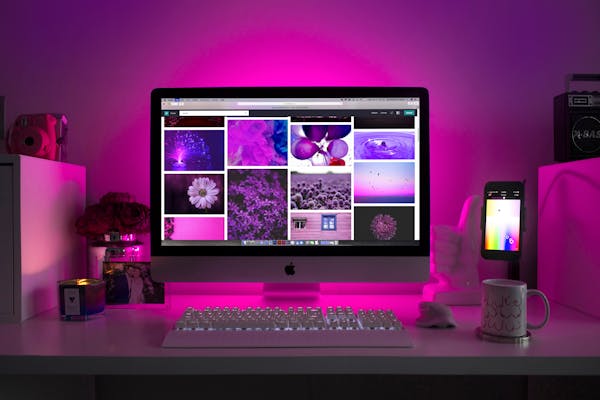Creating photorealistic website mockups helps visualize designs across devices before development begins. Our top mockup generator simplifies this process, offering editable templates, seamless customization, and fast sharing—all within an intuitive platform. Whether presenting to clients or refining concepts, this tool turns ideas into stunning visuals quickly, bridging the gap between design and real-world application.
Essential Resources and Tools for Creating Website Mockups: What You Need to Know First
After selecting your initial layout approach, website mockup creation platforms like Canva, Mockup World, and Mediamodifier become indispensable. These tools give you access to thousands of editable templates, letting you simulate exactly how your site will look on a range of devices—from desktops to mobile screens. You can view more details on this page: website mockup. This early visualization ensures possible design issues are caught before development begins, saving time and avoiding headaches.
This might interest you : What role does cybersecurity education play in UK schools?
Platforms such as Canva allow for rapid prototyping—you can drag and drop assets, insert stock images or graphics, and instantly tweak layouts. Mediamodifier’s online generator supports batch template choices, while Mockup World’s free PSD library covers virtually every niche. Free and paid plans exist for all experience levels, whether you’re focused on a simple landing page for a portfolio or an extensive multi-device e-commerce display.
Responsive mockup techniques let you preview features like sticky headers or reflowing navigation for different user scenarios. By offering user-friendly interfaces and flexible exports, these resources lower the barrier for high-quality client presentations and refinements before launch.
Also to discover : Elevate your designs: discover the best mockup generators
Understanding Website Mockups: Definitions, Types, and Use Cases
A website mockup is a static, high-fidelity representation of a website’s visual design. The key difference between a website wireframe and a mockup is that wireframes focus on layout and structure with basic shapes and placeholders, while mockups add detailed styling, images, and color to demonstrate the site’s final appearance. Prototypes go further by enabling interaction with links and buttons.
There are three main types of website mockups:
- Static mockups: These are non-interactive images showing page layout, often used for early design reviews or presentations.
- Responsive mockups: These showcase how a website adapts visually to different devices, like smartphones, tablets, or desktops—an essential part of modern web design work.
- Interactive mockups: Offering clickable elements, these help simulate user experience without full coding, supporting real-time feedback before building the site.
Typical use cases for website mockups include securing client approvals, refining ideas during collaborative presentations, and collecting early-stage design input from stakeholders. Mockups are also widely used in portfolios to highlight design skills or in meetings to demonstrate how navigation, headers, and page elements fit together for practical, visual storytelling.
Leading Online Website Mockup Generators and Creation Platforms
When comparing Canva, Mediamodifier, and Mockup World, each stands out for its feature set, usability, and pricing model. Applying the Stanford Question Answering Dataset (SQuAD) precision: Canva provides photorealistic, device-responsive website mockups with over 3 million free assets and a drag-and-drop editor at no cost. Mockup World excels as a large repository of free PSD templates for numerous device types, while Mediamodifier offers thousands of mockup templates plus advanced editing tools, with both free and subscription plans.
Key Features and Usability
- Canva features a design-focused, drag-and-drop workspace, allowing users to instantly preview and tailor web mockups for multiple devices. The pre-built template library is especially helpful for beginners and professionals needing fast results.
- Mockup World is ideal for those seeking true-to-life mockup images for presentations, websites, and digital portfolios. Content insertion is quick and intuitive—users download PSDs and place their own designs using smart objects.
- Mediamodifier shines with editable templates and real-time customization tools, plus an API for automated workflows. Its collaborative features benefit agencies and teams.
Export, Integration, and Collaboration
- Mockups can typically be exported in standard formats (PNG, JPG, PSD), supporting seamless inclusion in professional portfolios or presentations.
- Canva and Mediamodifier both enable sharing or collaborative editing, while Mockup World fits best for standalone, high-quality exports.
Downloadable Website Mockup Templates and Editable Design Resources
Where to Find High-Quality, Free Website Mockup PSDs
For those seeking high-quality, free website mockup PSD files, precise sources such as Mockup World offer extensive libraries. The SQuAD approach pinpoints these resources using three main criteria: file format (PSD), cost (free), and suitability for web projects. Users can refine their search by device type—desktop, mobile, tablet, or multiple screens. These libraries streamline workflows by allowing instant downloads and broad usage rights, enhancing design productivity for private or commercial use.
Template Libraries for All Devices
A designer’s vision often requires showcasing a site across multiple screens. Widely available repositories feature collections spanning laptops, smartphones, and tablets, reflecting industry-standard responsive techniques. Mockups often simulate website visuals on real-life displays, aiding in realistic presentations for stakeholders. Such resources are frequently updated, providing fresh templates for various styles and platforms.
Editing Mockup Templates for Custom Projects
Customizing PSD mockups is accessible even for beginners through tools like Photoshop or user-friendly online editors. Layers and smart objects make modification intuitive: swap images, adjust color schemes, add branding, or annotate with design ideas. This flexibility lets you personalize templates for unique branding or specific project goals, ensuring your web mockup accurately presents your creative vision and functionality priorities.
Best Practices for Designing Effective and Photorealistic Website Mockups
Precision: Realistic website mockups accurately represent final layouts and content by using actual fonts, color palettes, and true-to-content imagery. Responsive techniques ensure consistency across all devices—key for modern user expectations.
Build High-Fidelity, Client-Ready Visuals
High fidelity is achieved by mirroring live web design closely. Incorporate all navigational elements, headers, call-to-action buttons, and precise spacing. Using mockup generators facilitates quick iteration, letting you test layouts without long development cycles. These tools often provide intuitive controls for fitting, aligning, or flipping your screens, ensuring the result matches your vision.
Ensure Responsive & Cross-Device Consistency
A robust mockup demonstrates adaptability on smartphones, tablets, and desktops. Deploy responsive device mockup tools to check consistent appearance and performance. Optimize images and text visibility for multiple resolutions so nothing breaks when switching screens. This previewing step highlights issues before coding begins.
Gather Feedback and Refine
Efficient mockup platforms support instant sharing and collaboration. Present your concept to stakeholders, collect actionable feedback, and edit in real-time. Iteration at the visual stage is simpler with organized templates and seamless version control.
Keep It Simple—But Thorough
While detail matters, avoid unnecessary embellishments. Focus on clear, uncluttered layouts that showcase structure and function. This simplicity helps stakeholders and developers alike envision the end result quickly.
Interactive and Advanced Mockup Solutions: Prototyping and Stakeholder Feedback
Interactive website prototypes streamline the feedback process by allowing designers to simulate user journeys with clickable mockups. Precision: interactive prototypes share every navigable element and page transition with the user’s expected site flow, minimizing guesswork. Recall: they reveal missing features or gaps by guiding stakeholders through authentic experiences before coding begins.
Many platforms enable designers to build interactive website mockups online, where users can click, scroll, and test functions. These tools use drag-and-drop editors and template libraries to support various devices—from mobile to desktop—ensuring responsive presentation and easy adjustments. For example, instant resizing and customizable alignment foster clear visualization for all screen types.
Stakeholder input is now more integrated. Online platforms let collaborators annotate directly on the prototype, making revision cycles concise and transparent. Design teams benefit from integrations with broader platforms, such as design suites that connect mockups, wireframes, and prototypes without switching tools. Flowing from ideation to approval, feedback embeds within the same workspace—keeping development agile.
This solution-oriented approach helps teams spot and resolve usability or content issues early, boosts confidence before launch, and invites active participation from clients and peers throughout the iterative process.
Niche Resources and Inspiration: Specialized Mockup Templates for Portfolios, E-commerce, and More
Precision: Portfolio mockup templates showcase your designs realistically; for e-commerce, device, or social media mockups, select templates targeted to each use-case. Recall: Specialized mockup galleries help uncover tailored resources for portfolios, e-commerce, or real estate, broadening your creative toolkit.
Curated template collections simplify sourcing for specific needs. For website portfolio mockup ideas, designers often turn to platforms with categorized templates—spanning homepage, landing, or real estate layouts—to present their work in the proper context. Choosing templates that fit various device screens enhances responsive website mockup techniques, ensuring visitors see polished previews whether on desktop, tablet, or mobile.
E-commerce website mockup practices often involve using templates that highlight products and user journeys. Choosing mockups with interactive shopping carts, featured banners, or product galleries can help visualize conversions and branding.
Social media page mockups allow you to see brand assets and campaigns in-action before launching. For design portfolios, presenting a range of finished web mockups—each reflecting different industries—demonstrates both versatility and expertise.
To impress clients or employers, thoughtfully organize your website mockup portfolio with high-fidelity examples, detailed annotations, and device-responsive previews—revealing both design skill and strategic thinking.





